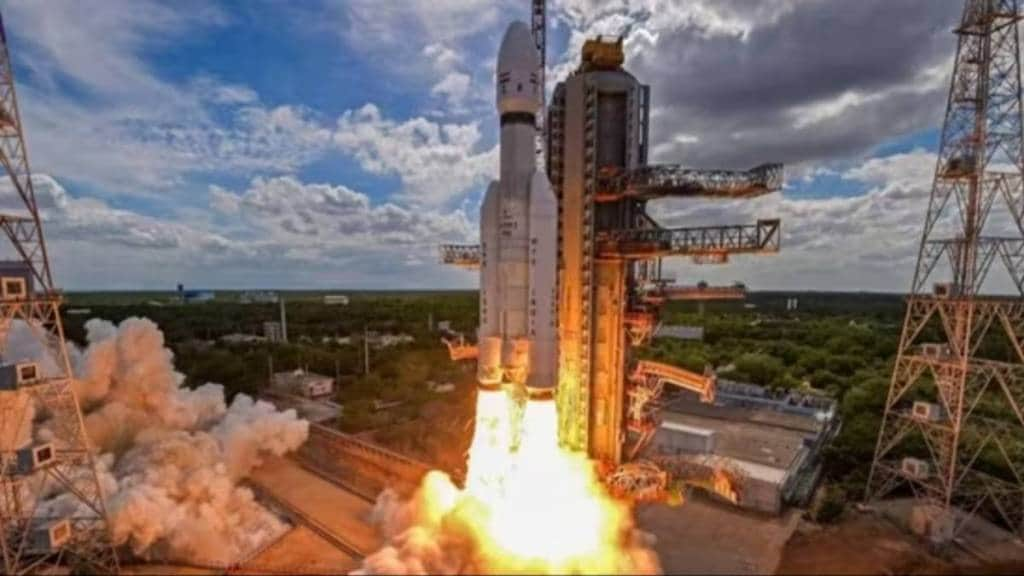Indian Space Research Organisation (ISRO) is working on a semi-cryogenic engine with a thrust of 2,000 kN that will use a combination of liquid oxygen (LOx) and kerosene propellants. The goal is to increase the payload capacity of the LVM3 and future launch vehicles. The development of this semi-cryogenic engine is being led by the Liquid Propulsion Systems Centre (LPSC), with assistance from other ISRO launch vehicle centres. The ISRO Propulsion Complex (IPrC), located in Mahendragiri, India, was responsible for the assembly and testing of the propulsion modules.
Successful Ignition Trial
On Thursday (May 2, 2024), a successful inaugural ignition trial took place at the semi-cryo integrated engine test (SIET) facility, in Mahendragiri. The facility was recently inaugurated by Prime Minister Narendra Modi.
The ignition phase is a highly crucial stage in the advancement of liquid rocket engine systems. During the ignition trial, a smooth and consistent ignition of the pre-burner was showcased, highlighting its crucial role in initiating the semi-cryogenic engine.
“The semi-cryo pre-burner is a component that helps initiate combustion in the engine, ensuring a reliable and efficient start-up of the semi-cryogenic engine. The successful initiation of the semi-cryo pre-burner marks a significant achievement in the development of the semi-cryo engine,” explains Bengaluru based Defence, and Aerospace analyst Girish Linganna.
In the 2000 kN semi-cryogenic engine developed by the Vikram Sarabhai Space Centre (VSSC) and utilized by ISRO, the ignition process is accomplished through the use of a start fuel ampoule containing a unique blend of Triethyl Aluminide and Triethyl Boron. “This combination, first introduced by ISRO, plays a vital role in successfully igniting the semi-cryogenic engine. The start fuel ampoule ensures effective and reliable ignition of the engine, making it a critical element in the semi-cryogenic engine’s operation,” he adds.
During the engine development phase, a test article, known as the pre-burner ignition test article, was created. This test article represents the complete engine power head system, comprising different components and subsystems. However, it does not include the turbo-pumps responsible for fuel and oxidizer delivery. The main objective of this test article is to assess and analyse the ignition process of the engine in isolation from the turbo-pumps.
The VSSC’s Propulsion Research Laboratory Division (PRLD) facility conducted multiple tests to analyse the ignition properties of injectors at the elemental level.
According to Linganna, “An injector is a crucial component in propulsion systems, which introduces fuel or propellant into a combustion chamber. It atomizes the fuel and ensures its proper mixing with the oxidizer for efficient combustion.”
These tests were aimed at analysing such factors as ignition characteristics, combustion behaviour and overall performance. The findings from these tests contribute to the advancement of injector technology and optimization of propulsion system designs.
Cryogenic Engines Vs Semi-Cryogenic Engines: A comparison
Cryogenic Engines:
Extreme Cold for High Performance;
Cryogenic engines use extremely cold propellants stored at very low temperatures;
They utilize liquid oxygen (LOx) as oxidizer and liquid hydrogen (LH2) as fuel;
Propellants are maintained below -150°Celsius (-238°Fahrenheit);
The extreme cold increases propellant density, enabling higher fuel-to-volume ratio and efficient combustion;
Ideal for space launches and interplanetary missions where high performance is crucial;
Semi-Cryogenic Engines:
Balancing Performance and Cost;
Semi-cryogenic engines employ a mix of cryogenic and non-cryogenic propellants;
Liquid oxygen (LOx) serves as oxidizer, while a non-cryogenic fuel like kerosene is used;
LOx is stored at cryogenic temperatures, while non-cryogenic fuel is kept at room temperature;
Combustion in semi-cryogenic engines is less efficient due to lower energy density of non-cryogenic fuel;
They offer advantages in terms of easier storage, handling, cost-effectiveness and practicality;
Suitable for medium-lift rockets or suborbital flights where a balance between performance and cost is needed.
Choosing the Right Engine
Cryogenic engines are preferred for missions requiring high performance and efficiency;
Semi-cryogenic engines are chosen when a balance between performance and cost is necessary;
Decision depends on mission requirements, cost considerations and desired performance levels;
Cryogenic engines utilize extremely cold propellants for high performance, while semi-cryogenic engines strike a balance between performance and cost by combining cryogenic oxidizer with non-cryogenic fuel. The choice depends on specific mission goals, costs and performance requirements.
What Next After the Successful Trial?
ISRO’s achievement in successfully igniting a semi-cryo pre-burner represents a significant milestone in the progress of semi-cryogenic propulsion systems. Subsequent to this milestone, further tests will be conducted on the engine powerhead test article and the fully integrated engine. Additionally, progress is being made on the development of a semi-cryo stage capable of accommodating 120 tons of propellant.


